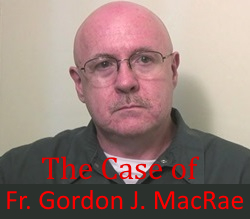Welcome, Stand to Reason readers! Here is my response to the Margaret Sykes/"brain waves" issue.
There's a lot to this one, but here it goes:
1. WHO IS MARGARET SYKES?
This is not an ad hominem towards Ms. Sykes. I also don't want to be guilty of the genetic fallacy. However, some words about Ms. Sykes bear mentioning.
Ms. Sykes has billed herself as "a long-time writer on medical topics with a special expertise in women's reproductive issues: contraception, fertility, pregnancy and abortion" (see here, left-hand column). She is virulently pro-choice; she is even against parental notification when underage girls seek abortion (source). (I guess she would not vote Yes on 85, would she?) Also, in an especially angry 1999 article, Ms. Sykes wrote that she's "disgusted" at the "hypocrisy" and "muddled thinking" of pro-lifers. In other words, she doesn't think much of the pro-life position and the people who hold it.
Nevertheless, I've taken the time to peruse quite a bit of Ms. Sykes' writings (there's really not a lot), and I've found a number of instances of error, hypocrisy, and dishonesty from her. For example,
a. Ms. Sykes, 5/6/2001: "Having an abortion is not a life-changing decision for anyone" (source, scroll down to #9).
Yes, in a Q&A column, Ms. Sykes actually wrote that, and she wasn't kidding. "Not a life-changing decision for anyone"? Tell that to the scores of women at Silent No More Awareness (testimonies). Also check out these testimonies. Countless women have relayed how their abortion had a horrifically negative impact on their lives. (For example: Sharon Osbourne, wife of Ozzy Osbourne, The Daily Mail (UK), December 2004: "I howled my way through it, and it was horrible. I would never recommend it to anyone because it comes back to haunt you. When I tried to have children, I lost three – I think it was because something had happened to my cervix during the abortion. After three miscarriages, they had to put a stitch in it. In life, whatever it is, you pay somewhere down the line. You have to be accountable." (bold added) (source))
Quite simply, Ms. Sykes' remark that "having an abortion is not a life-changing decision for anyone" is flat-out irresponsible. (I won't even breach the fact that an abortion terminates an individual human life.)
b. Ms. Sykes, 2/13/2001: "Dr. [George] Tiller's clinic in Kansas will do a third-trimester abortion if a doctor has diagnosed a lethal defect in the fetus." (emphasis mine) (source)
Ms. Sykes' remark to a reader is certainly misleading, if not misinformed and dishonest. A fetus does not have to have a "lethal defect" for Dr. George Tiller to exterminate your fetus. Dr. Tiller's own web site acknowledges that he does perform elective late-term abortions (link).
In addition, here's Dr. Tiller in his own words, from a National Abortion Federation conference, New Orleans, April 1995. (I've transcribed Dr. Tiller's own words myself from the audio of a CD called "Fire & Ice" (available at Life Dynamics).)
"We have some experience with late terminations. About 10,000 patients between 24 and 36 weeks, and something like 800 fetal anomalies between 26 and 36 weeks in the past 5 years." (bold added)
Dr. Martin Haskell is another doctor who has performed late-term abortions. Here he is at the National Abortion Federation conference, San Francisco, March 1996:
"We seem to be taking a position that, in the case of the D&X, that the fetuses are dead at the beginning of the procedure, which is generally not the case. The second criticism has been that we are really skewing the debate to a very small percentage of women that have fetal anomalies or some other problem that really need the procedure versus the 90% who it's elected, at least through the 20 to 24 week time period; and as you get on up towards 28 weeks, it becomes closer to 100%." (bold added)
Do the math. Tiller says that about 8% of his late terminations are for "fetal anomalies." Following reason through Dr. Haskell's premise, the rest are completely elective! (Of course, in this case, I'm ignoring the argument that a "fetal anomaly" is a justifiable reason for an abortion. It is not.)
Again, Ms. Sykes has misled her readers and provided misinformation. (By the way, in another post, Sykes actually directs a reader to Dr. Tiller's web site for a late-term abortion.)
c. Ms. Sykes, 12/15/2000: Ms. Sykes takes issue with pictures of aborted fetuses that are shown on the internet. She writes, "[T]hose pictures aren’t what they are claimed (sic) to be. Most ‘aborted fetuses’ in photos shown by anti-choicers are either naturally aborted (miscarried) fetuses or stillborn babies. Others are rubber or plastic fakes.” She also accuses pro-lifers of “steal[ing] fetuses and mangl[ing] them to create propaganda." (source)
Yes … the ol' "the pictures are fake" argument. Ms. Sykes doesn't actually take issue with the age/development descriptions of the photos, but she feels her argument is effective anyways.
Ms. Sykes may wish to take a visit to the image galleries at Priests for Life. I direct her to this particular site because many of the photos of the fetuses have been authenticated and certified with a doctor's signature (like this one).
Again, Ms. Sykes performs a disservice to her readers.
d. Ms. Sykes: "Experience"?
On the pages at about.com where Ms. Sykes' answers to readers' questions have appeared (like this one, bottom/left-hand side), she highlights her "expertise" and "experience" that make her qualified to answer questions about abortion, contraception etc.
Can you find the problem in the following statement by her?
"Along with most others who look at the issue of abortion and birth control from a medical and public health point of view, I realize that contraception and abortion must be legal and available to women, regardless of personal religious or ethical views on the subject. However, I understand and sympathize with those who are uncomfortable with abortion, as long as they don't attempt to impose their views on others." (bold added)
Apparently, Ms. Sykes has no problem stating and imposing her view that abortion "must be legal and available to women." But she doesn't want pro-lifers to "attempt to impose their views on others"! Good grief. Hypocrisy, maybe?
Finally … It's fair that if Ms. Sykes is going to demand accuracy and accountability from pro-lifers (which she should!), it's also fair that we ask the same of her! As I've demonstrated above, Ms. Sykes is not holding herself to the same standard of accuracy that she wants pro-lifers to hold. Ms. Sykes has an established history of providing misleading and erroneous information to her readers.
2. "BRAIN WAVES"
First of all, Ms. Sykes underscores the crucial importance that pro-lifers be completely accurate and accountable when presenting their positions and arguments. As Steve Wagner says, "Given the stakes of the debate, we can't afford [not to defend our claims adequately]."
Ms. Sykes makes a persuasive case that the "'Brain waves'-are-present-in-a 40-day-old fetus" statement is not accurate. This is not to say that Ms. Sykes is not guilty of some sly wordplay of her own.
For example, at the start of her piece, Ms. Sykes tells us that the term "brain waves" is "a non technical term anyways," and she somewhat disparages pro-lifers for using the term. However, in the very last paragraph of her piece, Sykes writes, "So I have no objection to saying that 'a human life' or 'human personhood' begins when brain waves are measured on an EEG" (bold added). She apparently objects when pro-lifers use the term "brain waves," but she has no problem using the exact same words herself when it comes to making her own case.
Other issues:
a. Ms. Sykes writes, "Only two courses of study on still-living aborted human embryos and fetuses have ever been done: Okamoto and Kirikae in Japan in the 1940s, and Bergstrom and Bergstrom in Finland in the 1960s." What is her source for this claim? She doesn't tell us. If we are to believe her, the last "course of study on still-living aborted human embryos and fetuses" has been in the 1960's (40 years ago)?? Hmmm …
Ms. Sykes has a point that pro-lifers' references may be outdated. In the 21st century, a reference from 1964 may not be all that convincing to a lot of people. However, it appears there is ample recent research to support there is a level of "brain functioning" in the early stages of the human fetus.
Using the limited resource of the internet, I came across this article written by a Rhawn Joseph, Ph.D.: "Fetal brain &
cognitive development" (Developmental Review, 20, 81-98, 1999). In follow-up research, I found that Dr. Joseph has been published for several years. He has written considerably in the area of neuroscience, and his books can be found at Amazon.com. There's little reason to believe that the posted journal article is not genuine, as it appears on Dr. Joseph's own web site. It is not a pro-life web site; it is simply the personal web site of a scientist who has an extensive history of studying the brain. With that said, Dr. Joseph's journal article cites a number of references that suggest there is recent science that supports that there is brain activity in the early stages of the fetus. (All bold and underline are mine:)
ABSTRACT
The human brainstem is fashioned around the 7th week of gestation and matures in a caudal to rostral arc thereby forming the medulla, pons, and midbrain. The medulla mediates arousal, breathing, heart rate, and gross movement of the body and head, and medullary functions appear prior to those of the pons which precede those of the midbrain. Hence, by the 9th gestational week the fetus will display spontaneous movements, one week later takes its first breath, and by the 25th week demonstrates stimulus-induced heart rate accelerations. *snip*
It is now well established that the human fetus is capable of some degree of behavioral complexity. In fact, as early as the 9th week of gestation the fetus is able to spontaneously move the extremities, head, and trunk (de Vries, Visser, & Prechtl, 1985). *snip*
THE DEVELOPMENT OF THE MEDULLA: A FUNCTIONAL OVERVIEW
Broadly considered, the brainstem consists of the medulla, pons, and midbrain, and matures in a caudal to rostral arc–a process that begins around the 6th to 7th week of gestation and continues well into the first year of postnatal life (Debakan, 1970; Gilles et al., 1983; Sidman & Rakic, 1982; Yakovlev & Lecours, 1967). Hence, the nuclei of the medulla generally emerge and myelinate prior to those of the pons which precede those of the midbrain. As noted above, this pattern of functional development is also demonstrated behaviorally in the fetus and neonate. *snip*
SPONTANEOUS HEART RATE CHANGES, BODY AND BREATHING MOVEMENTS
The neural tube is first fashioned three weeks after conception and by the 7-8th week of gestation the major structures of the medulla have been established (Gilles et al., 1983; Sidman & Rakic, 1982). These include the hypoglossal, spinal accessory, vagus, and glosopharyngeal cranial nuclei, and the neurons of the reticular activating system. As noted, these nuclei and activating pathways subserve arousal, generalized body movements, head turning, shoulder elevation, heart rate, and breathing.
Likewise, beginning as early as the 7th week of gestation, the infant will display spontaneous movements, which by the 9th week come to include the extremities, the trunk, and the head (de Vries et al., 1985). Soon thereafter the fetus will take its first "breath" and by the 10th week of gestation spontaneous "breathing" (chest and abdominal) movements are observed (de Vries et al.,1985). *snip*
THE DEVELOPMENT OF THE MIDBRAIN: A FUNCTIONAL OVERVIEW
The midbrain is the least differentiated segment of the brainstem, and consists of the dopamine producing substantia nigra, the inferior-auditory and superior-visual colliculus, and the trochlear (IV) and oculomotor (III) cranial nerves which, in conjunction with the MLF and abducens (VI) control eye movements (Aitkin, 1986; Vertes, 1990). The midbrain is actually coextensive with the pons and these structures interact and share overlapping nuclei and coextensive pathways, such as the MLF and reticular core, which, in the midbrain becomes the tegmentum–the rostral extension of the pontine-medullary reticular formation.
The caudal to rostral pattern of brainstem maturation is also characteristic of the midbrain with the inferior-auditory colliculus beginning its cycle of maturation around the 6th week of gestation vs the 8th week for the superior-visual colliculus (Bayer et al., 1995; Sidman & Rakic, 1982).
Although Dr. Joseph's work is full of biological terminology, the layman can see that "something" is happening in the brain area early in the life of the fetus. Here is where Ms. Sykes is going to begin to run into a lot of problems. (More on this below.)
b. I also believe a healthy dose of common sense helps to clarify this entire issue. Look at this picture of a 7-week-old fetus:

Common sense dictates that this is a whole being that is alive and is growing. Something is happening in the head of the fetus, and whatever it is, it is contributing to its growth and sustainment. In three weeks, the fetus will look like this (10 weeks old):

In both pictures, the head accounts for what looks to be about 40% of the entire body! (Go look in the mirror now. The proportion is a lot less now, isn't it!) It defies common sense to say that nothing significant is happening here. Dr. Joseph's work reveals that there is early activity in the area of the brainstem that is contributing to the regulation of a heartbeat and other bodily functions. Real pictures are stubborn things.
c. HERE'S THE GOOD STUFF:
In my research, I came across this site. Wow! There's lots of free video, including that of a fetus with hand movements at 6 1/2 weeks! The full DVD is called The Biology of Prenatal Development, and it is available from National Geographic. In another video clip, an 8-week-old fetus is shown moving, and the narrator states,
"At 8 weeks the brain is highly complex and constitutes almost half of the embryo's total body weight." (emphasis mine)
With live video to accompany this, it's hard not to believe her! Check it out. (Scroll down to "Chapter 30: 8 Weeks: Brain Development.") As I watched various clips, I wondered what Ms. Sykes would say about them. (I've guessed at what she'd say, but I won't print it.)
After witnessing such eye-opening video, I immediately felt that the issue of "brain waves" seemed almost picayune. What I was witnessing was so obviously a unique human life!
The DVD web site also contains a 42-page .pdf file that
So to bring this towards a close …
d. Ms. Sykes implies that an EEG should be the instrument to determine when a human life begins.
Some people will concur with this belief by saying, "Well, an EEG is used to determine death, so it should be used to determine life." Such a response is problematic. When there are no vital signs on an adult (e.g., breathing, heartbeat) and an EEG returns a "flat" reading, we know with almost 100% certainty that that person's body has died and will not "spring back" to life. Within hours, if left alone, the corpse will begin to rot. We know that bodily death has occurred.
While a reading on an EEG might not be obtainable on an early-stage fetus, we know that it will at some point in the future (barring any other biological interferences). There is no question that from the moment of conception, the unborn being is alive, whole, growing, innocent, and defenseless.
In addition, as this Wikipedia entry indicates, an EEG has "several limitations" and has "limited anatomical specificity when compared with other functional brain imaging techniques." In other words, just because an EEG can't measure it, it doesn't mean that it's not there.
3. THE BOTTOM LINE
At first blush, it appeared that Ms. Sykes had made a powerful rebuttal to a common argument by pro-lifers. But upon closer inspection, however, her use of selective research and a double standard approach only underscored the faults of her pro-choice position.
Nevertheless, pro-lifers should take a good lesson from this "Margaret Sykes/'brain waves'" episode. Accuracy, accountability, and proper semantics are crucial. The good news is that we have the truth on our side. (Did you watch the video?) Unlike our opponents, we don't have to cheat.
Yes, pro-lifers have been using the "brain waves at 40 days" case, and it appears that we do not know for sure if this is entirely true. However, our mistake has not been deliberately deceptive. We believed the sources that we saw, and we trusted them.
With that said, pro-lifers can easily correct and modify their case by saying something along the lines of, "At the 7th week
Finally, it is important to note that Ms Sykes is ultimately forwarding the position that a fetus which has not yet developed to a certain level has not yet reached the beginning of "a human life." Such a position discriminates against human individuals based on their function. Scott Klusendorf's use of the SLED acronym shows the inherent errors of this way of thinking. 'L' stands for 'Level of development.' Writes Scott,
Level of development: True, embryos and fetuses are less developed than you and I. But again, why is this relevant? Four year-old girls are less developed than 14 year-old ones. Should older children have more rights than their younger siblings? Some people say that self-awareness makes one valuable. But if that is true, newborns do not qualify as valuable human beings. Six-week old infants lack the immediate capacity for performing human mental functions, as do the reversibly comatose, the sleeping, and those with Alzheimer’s Disease.
The bottom line is that in all of Ms. Sykes' talk about EEG's and the development of the cerebral cortex, Ms. Sykes is unable to explain how this diminishes the fact that a fetus is an individual human being that is alive and whole and growing and innocent.
(There's a lot more I could write on this, but, for now, … enough! Thanks for reading!)








